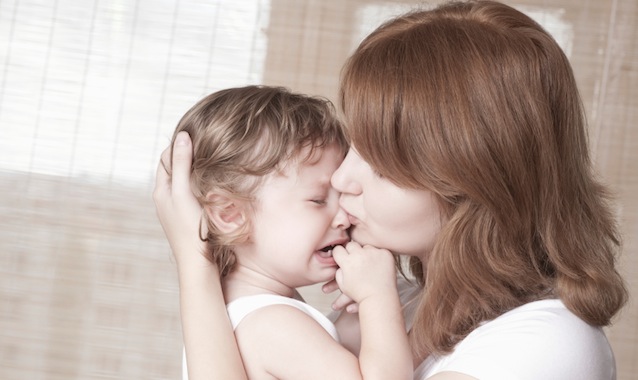Emotional Containers: 5 Ways to Become Your Child’s Safe Place
May 19, 2014
I had the pleasure of attending a seminar today given by Charlie Ruce, a Marriage and Family Therapist. There were so many things he taught us, but one image really resonated with me: Parents are “emotional containers” for their children. Essentially, we offer a safe place for their feelings.
It’s easy to think of meeting our kids’ physical needs. None of us are going to leave our kids hungry or unclothed. Most of us pay a lot of attention to their intellectual needs. We send our kids to good schools, do homework with them, and get to the bottom of a lower grade on a report card. But, emotional needs can be overlooked because they generally stay under the surface where we don’t see them as clearly.
Every child experiences strong emotions. While events in their lives seem trivial to parents’ with a better grip on the big picture, children face anger, fear, rejection, shame, disappointment, loneliness, and so on. When they keep these emotions inside, it can lead to bigger problems later in life.
We, as parents, can help them release these feelings by creating a big emotional container for them. According to Mr. Ruce, we tell our children through our actions, “Pour your emotion into me. I can handle it.” We want to be a shelter where they can wrestle with what’s inside.
He gave these tips for making our container bigger.
1. Invite Conversation.
Ask questions that go deeper than what they do. Discover what they think, feel, want, and need. When you dive into their deepest thoughts, you truly know them and they respond to being KNOWN and understood.
2. Model Healthy Emotional Expression.
Get used to naming your emotions for your kids. Let them see you express and wrestle with real life emotions. This made me think of when I’m in the car with my kids and I comment about a driver. My kids always need to know exactly what’s happening. I end up saying something like “Oh, I just got frustrated because that person cut me off. It’s not a big deal, they probably didn’t see me. I’ll go around them.” In my head, I’m totally flipping that driver the bird!
3. Mirror Their Body Language.
When your child does open up, do what they do. So, no smiles if they’re hunch over with their heads hanging. No angry faces when they cry.
4. Validate Their Emotion.
Don’t minimize their feeling by trying to explain it away or figure out what they did wrong. Whatever the source, the emotion itself is real.
5. Find Your Own Container.
We’re people, too. Our emotions can build up in the same way as our kids. We can’t fit their emotion if we are already filled with our own. Find a safe person – a spouse, a good friend, or a therapist – who can be your sounding block. Your own emotional health is crucial to helping your kids with theirs.
Let’s be honest. Nobody’s perfect. We all spill our emotions onto others sometimes. Forgive yourself and move on. Your children will respond to your genuine interest in what’s going on in their hearts.




